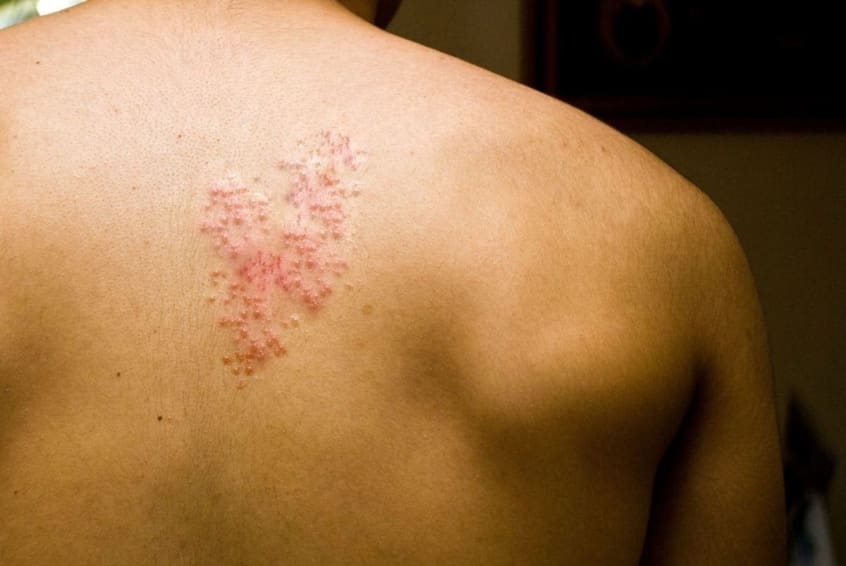Shingles: Symptoms, Causes, Treatment
What are the symptoms of shingles?
Shingles, also known as herpes zoster, is a viral infection caused by the varicella-zoster virus, the same virus that causes chickenpox. The symptoms of shingles can vary but often include:
- Pain: The most common symptom of shingles is pain, which can be mild to severe. The pain is often described as a burning, shooting, or stabbing sensation and may occur before the rash appears.
- Rash: Shingles typically causes a rash that appears as a band or strip of red, fluid-filled blisters that are often confined to one side of the body. The rash usually develops on the chest, abdomen, or face but can occur anywhere on the body.
- Itching: The rash caused by shingles can be itchy for some people.
- Tingling or numbness: Some people may experience tingling, numbness, or a sensation of pins and needles in the affected area before the rash appears.
- Fluid-filled blisters: The rash caused by shingles consists of fluid-filled blisters that break open and crust over.
- Fever: Some people with shingles may develop a low-grade fever.
- Fatigue: Shingles can cause fatigue or a general feeling of being unwell.
- Sensitivity to touch: Some people with shingles may experience increased sensitivity to touch in the affected area.
- Headache: In some cases, shingles can cause headaches.
It’s important to note that the symptoms of shingles can vary widely from person to person and may be mild or severe. If you suspect you have shingles, it’s important to see a healthcare provider for an accurate diagnosis and appropriate treatment. Early treatment can help reduce the severity and duration of symptoms and reduce the risk of complications.
What are the causes of shingles?
Shingles is caused by the reactivation of the varicella-zoster virus, the same virus that causes chickenpox. After a person has had chickenpox, the virus remains dormant (inactive) in the nerve cells near the spinal cord and brain. In some people, the virus can reactivate years later, causing shingles.
The exact cause of reactivation is not fully understood, but it is thought to be related to a weakening of the immune system. Factors that may increase the risk of shingles include:
- Aging: The risk of shingles increases with age, as the immune system weakens over time.
- Weakened immune system: Conditions or medications that weaken the immune system, such as HIV/AIDS, cancer treatments, or immunosuppressive medications, can increase the risk of shingles.
- Stress: Stress can weaken the immune system and increase the risk of shingles.
- Certain medical conditions: Certain medical conditions, such as autoimmune diseases, can increase the risk of shingles.
- Recent illness or injury: Illnesses or injuries that weaken the immune system can increase the risk of shingles.
- History of chickenpox: People who have had chickenpox are at risk of developing shingles later in life.
It’s important to note that shingles itself is not contagious, but the varicella-zoster virus can be spread to others who have not had chickenpox or have not been vaccinated against chickenpox. Direct contact with the fluid from shingles blisters can spread the virus. Once the blisters have crusted over, the person is no longer contagious. If you suspect you have shingles, it’s important to see a healthcare provider for an accurate diagnosis and appropriate treatment.
What is the treatment for shingles?
The treatment for shingles typically involves medications to reduce the severity and duration of the infection, relieve pain and discomfort, and prevent complications. Treatment may include:
- Antiviral medications: Antiviral medications, such as acyclovir, valacyclovir, or famciclovir, can help reduce the severity and duration of the shingles rash if started early in the course of the illness. These medications work best when started within 72 hours of the rash appearing.
- Pain medications: Over-the-counter pain medications, such as acetaminophen or ibuprofen, can help relieve pain and discomfort associated with shingles. In some cases, prescription pain medications may be necessary.
- Topical treatments: Calamine lotion or antihistamine creams can help relieve itching associated with the shingles rash.
- Antidepressants or anticonvulsants: In some cases, medications such as tricyclic antidepressants or gabapentin may be prescribed to help relieve nerve pain associated with shingles.
- Corticosteroids: In some cases, corticosteroids may be prescribed to help reduce inflammation and swelling associated with shingles. However, the use of corticosteroids for shingles is controversial and should be used with caution.
- Cool compresses: Applying cool, moist compresses to the affected area can help relieve pain and itching.
- Rest and self-care: Getting plenty of rest and taking care of yourself can help your body recover from shingles. Avoiding stress and eating a healthy diet can also help support your immune system.
It’s important to see a healthcare provider for an accurate diagnosis and appropriate treatment if you suspect you have shingles. Early treatment can help reduce the severity and duration of symptoms and reduce the risk of complications. In some cases, shingles can lead to complications such as postherpetic neuralgia (persistent nerve pain), vision loss (if the rash occurs near the eye), or neurological problems.




